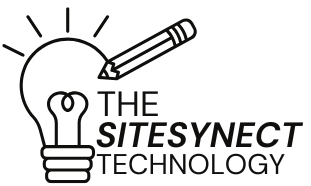How HRM Tools Are Streamlining Workforce Management
Discover how AI-driven HRM tools are transforming recruitment, payroll, and employee engagement. Learn key trends, benefits, and top solutions for efficient workforce management.

Introduction
In today’s fast-paced business world, managing a workforce efficiently is more critical than ever. Traditional HR tasks—like manual payroll processing or paper-based onboarding—are becoming relics of the past. Enter HRM (Human Resource Management) tools: innovative software solutions that streamline operations, boost productivity, and foster employee satisfaction. From AI-powered recruitment to real-time analytics, let’s explore how these tools are reshaping workforce management in 2024.
Key Areas Where HRM Tools Excel
-
Smart Recruitment & Onboarding
-
AI-Driven Hiring: Tools like Zoho Recruit and HireVue analyze resumes, screen candidates, and even conduct video interviews using sentiment analysis.
-
Automated Onboarding: Platforms such as BambooHR create personalized onboarding checklists, e-sign documents, and assign training modules—cutting onboarding time by 50% (Forbes, 2023).
-
-
Payroll & Compliance
-
Error-Free Processing: Solutions like ADP Workforce Now automate tax calculations, benefits administration, and compliance updates, reducing payroll errors by 70%.
-
Global Workforce Support: Tools like Rippling handle multi-country payrolls and local labor laws effortlessly.
-
-
Performance Management
-
Continuous Feedback: Platforms like Lattice enable real-time feedback and goal tracking, replacing outdated annual reviews.
-
Skill Development: AI identifies skill gaps and recommends courses (e.g., LinkedIn Learning integrations).
-
-
Employee Engagement & Wellness
-
Pulse Surveys: Tools like Culture Amp gauge employee sentiment and predict turnover risks.
-
Wellness Platforms: Apps like Calm and Headspace integrate with HRM systems to promote mental health.
-
-
Data-Driven Decision-Making
-
Predictive Analytics: Tools like Workday forecast hiring needs and turnover trends using historical data.
-
Custom Dashboards: Track KPIs like retention rates and productivity in real time.
-
2024 Trends in HRM Technology
-
AI & Machine Learning: Automate repetitive tasks (e.g., answering HR queries via chatbots like Leena AI).
-
Remote Work Optimization: Tools like Oyster HR simplify global remote hiring and compliance.
-
DEI Integration: Platforms now include diversity analytics to ensure equitable hiring and promotions.
-
Blockchain for Security: Securely store employee data and contracts using decentralized systems.
Benefits of Adopting HRM Tools
-
Boost Efficiency: Reduce administrative workload by 40% (Deloitte, 2023).
-
Enhance Employee Experience: Self-service portals empower staff to manage leave, benefits, and tax forms.
-
Cost Savings: Cut HR operational costs by up to 30% through automation.
-
Scalability: Easily adapt to business growth or seasonal hiring spikes.
Challenges & Solutions
-
Data Privacy Concerns: Opt for GDPR/CCPA-compliant tools like Namely with end-to-end encryption.
-
Resistance to Change: Provide training sessions and highlight user-friendly interfaces (e.g., Gusto).
-
Integration Issues: Choose platforms with API support (e.g., SAP SuccessFactors) to sync with existing ERP/CRM systems.
Future of HRM Tools
-
Predictive Employee Retention: AI will analyze behavior patterns to flag attrition risks.
-
Metaverse Onboarding: Virtual reality simulations for immersive training experiences.
-
Ethical AI Audits: Tools to eliminate bias in hiring algorithms.
Conclusion
HRM tools are no longer optional—they’re essential for businesses aiming to thrive in 2024. By automating mundane tasks, enhancing decision-making, and prioritizing employee well-being, these platforms unlock unprecedented efficiency and engagement. Whether you’re a startup or an enterprise, investing in the right HRM tool can transform your workforce into a strategic asset.
What's Your Reaction?
 Like
0
Like
0
 Dislike
0
Dislike
0
 Love
0
Love
0
 Funny
0
Funny
0
 Angry
0
Angry
0
 Sad
0
Sad
0
 Wow
0
Wow
0





































